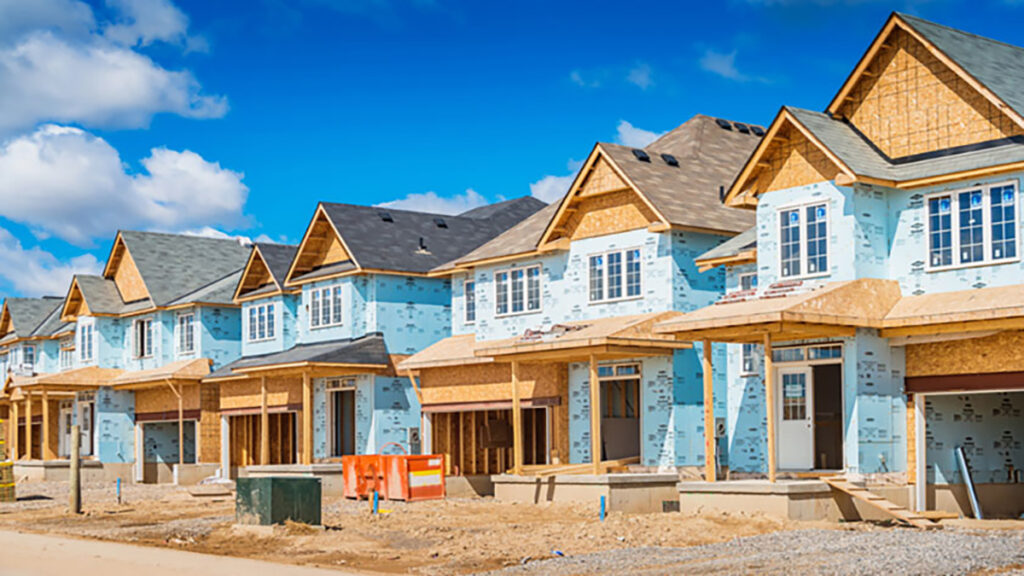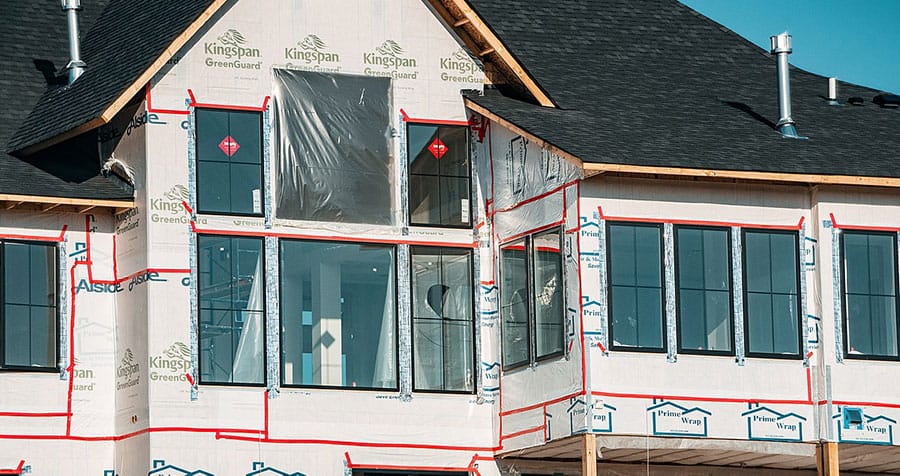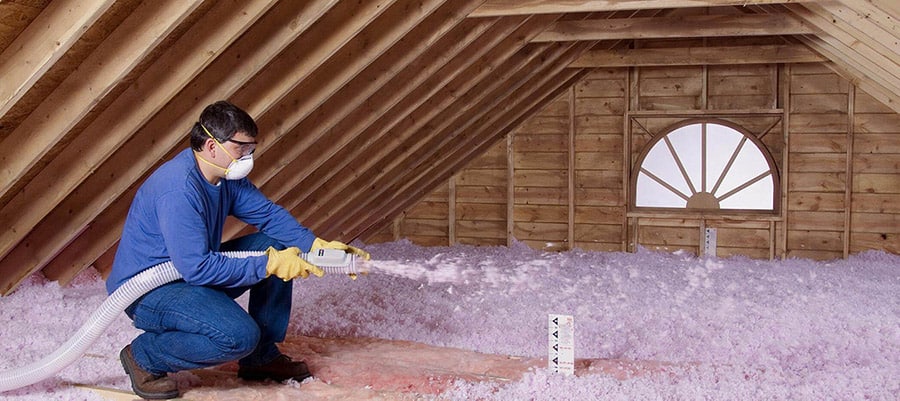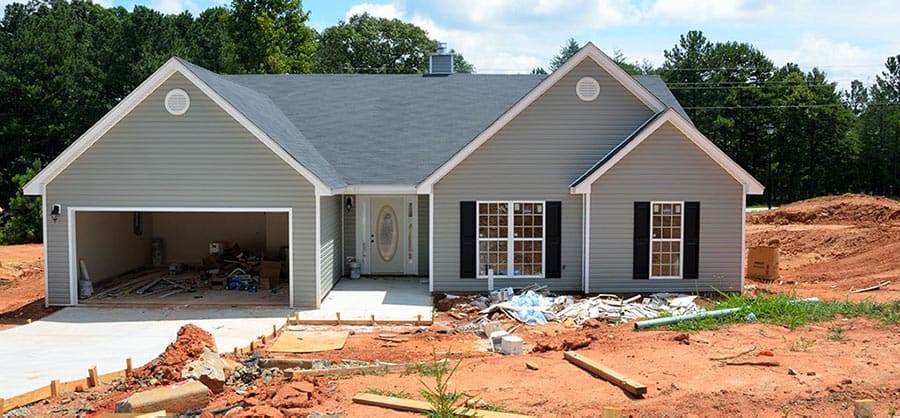New home construction defects are a widespread issue that must be addressed. Poor workmanship, materials, and design can lead to major problems with the structure of the building that can range from costly repairs to medical bills due to injuries caused by the defects.
Building codes are in place to prevent new home construction defects, but they don’t always catch them all, and even when they do, some builders may cut corners during the construction process, which can cause similar potential issues.
Buyers should take measures such as obtaining a home inspection before making the purchase to catch any problems before closing the property.
Common Defects in New Home Construction
Defects in new build homes are common despite their attractive modern features. Common defects in new home construction center around poor workmanship and faulty materials, leading to water damage or structural issues.
New construction home nightmares can be a homeowner’s worst nightmare. From shoddy workmanship to endless delays, these nightmares can turn a dream home into a living nightmare. Poor craftsmanship is one of the key signs of a poorly built house riddled with new construction red flags.
Homeowners may be forced to endure numerous delays, ranging from missing and defective materials to absent workers, which can make building a new home a never-ending ordeal.
Whether it’s due to inadequate planning, poor communication, or other factors, new construction home building nightmares are a serious issue that can cause significant stress and frustration for homeowners.

1. Foundation and Structure Problems
Surprisingly, one of the most common new home construction defects is structure and foundation problems. Some of the common defects in new home construction are:
- Foundation cracks due to settlement: many newly constructed homes are built on cleared land. Newly cleared land could lead to settlement problems when the ground wasn’t properly prepared before construction.
- Damaged framing materials: building materials delivered to a job site should be stored elevated slightly off the ground and wrapped in plastic to protect them from moisture. Sometimes even with the best efforts, building materials such as wood framing get wet. Depending on how long exposure was, the building materials may be fine once they have dried out. However, wood will often twist or bow over time.
- Walls that are not straight: sometimes, building plans are not followed as indicated. Sometimes it’s due to a needed change, but sometimes it’s due to a misinterpretation of the building plans. Closets, doorways, windows, etc., can easily be framed correctly but in the wrong location.
- Uneven roof or floor trusses: Most homes are now built with an engineered roof and floor trusses. These trusses are often unlevel or sag if not supported correctly. Uneven roofing creates sagging in the roof structure or waviness in the roof sheathing, which causes the roof coverings to be uneven. Uneven floor trusses can cause “creaking in the floor” from the subfloor movement.
2. Improper Lot Drainage Issues
The major contributing factor to foundation failure is drainage, even in well-built homes. The building lot should be tampered with away from the house to encourage stormwater runoff to flow away from the house. Left uncorrected, water problems around foundations cause erosion and increase settlement, which can adversely affect the foundation.
- Basements: since most basements are underground, lot drainage is essential to prevent water intrusion through the walls.
- Crawl spaces: – drainage around crawl spaces is a lot like basements. However, water intrusion in the crawl space can go unnoticed for a long time, causing wood rot to the floor structure.
- Concrete slabs: – with concrete slabs, poor drainage can cause a concrete slab to crack and shift, affecting the entire interior as most slabs also serve as the base under walls and flooring.
3. Windows Installation Problems

Windows are one of the most common new home construction defects homeowners face. Windows are prone to several problems in new construction, including:
- Leaks where windows aren’t correctly flashed
- Windows that don’t open and close well because they were installed too tightly
- Broken windows from settlement or construction defects
- Fogged windows from broken thermal seals.
- Windows with various manufacturer defects
4. Exterior and Interior Doors Problems
Exterior and interior doors are prone to several new home construction defects. Some of the issues with doors in new construction include:
- Exterior doors that are not closing tight, allowing air penetration and reducing energy efficiency.
- Leak around exterior doors due to flashing that is not installed correctly.
- Exterior door hardware that doesn’t latch properly. Doors that don’t close properly can be adjusted to operate as intended.
- Interior doors need to examination to verify they are closing correctly.
- Interior doors that drag across the floor.
- Interior door hardware that is missing or installed correctly.
5. Problems with Heating and Cooling Systems
Heating and cooling systems in one of the essential systems in new construction. Some common new home construction defects with heating and cooling systems include:
- The ductwork is not sealed or connected correctly, resulting in air leaks that cause condensation and mold.
- Improperly connected power or fuel sources, such as missing service disconnects and gas shut-off valves.
- Undersized heat pump and air conditioning systems for the square footage of the house
- Water leaks from condensate discharge pipes leak onto ceilings and into wall cavities.
- Poorly insulated refrigerant lines sweat, causing condensation in basements, attics, and wall cavities.
- Missing condensation pans under air handlers or furnaces.
- Improperly vented gas furnaces in attics, basements, or mechanical rooms.
6. Problems with Electrical Systems and Components
There are many components within the electrical system, all needing inspection. Having so many parts leaves room for new home construction defects. Some common electrical defects include:
- Reversed polarity in electrical outlets
- Missing ground fault circuit interrupter (GFCI) outlets.
- Arc fault circuit interrupter (AFCI) breakers that fail to trip.
- Meter bases are not secured well to the house.
- Electrical service panels where breakers are not correctly labeled.
- Electrical junction boxes with missing cover plates.
- Light fixtures that have not been installed yet.
7. Problems with the Plumbing System and Fixtures
Next to the electrical system, the plumbing system has numerous components and potential new home construction defects. Common problems with plumbing systems include:
- Gas tank or tankless water heaters that are not ventilated properly.
- Gas water heaters in garages with no stop block.
- Gas water heaters are not elevated 18 inches in the garage.
- Water supply pipes that have hot and cold water lines reversed.
- Water leaks in supply and drain pipes
- Leaky faucets at sinks and bathtubs.
- Leaky water shut off valves under sinks and other plumbing fixtures.
8. Roofing Installation Problems
The roofing is probably the most critical exterior system in your new home. If the roof is wrong, everything else will surely follow. Some of the common roofing problems include:
- Roofing materials improper installation causing leaky roofs
- Roof flashing is not correctly installed.
- Exposed nail heads on ridge vents and other roof penetrations
- Drip edge flashings not installed correctly
- Vulnerable roof configurations
- Gutters are not installed correctly to drain stormwater away from the roof
9. Exterior and Interior Painting Issues
Painting is typically one of the last things done in a new house. It’s also sometimes rushed through to meet deadlines. Many contractors only include one coat of paint with touch-ups, so if the paint is not applied correctly, you can have thin paint areas where mud lines show the room.
Often, painters add water to thin paint to make the paint go further. Painters do this to use paint sprayers as thick paint will clog sprayer heads.
10. Problems with Exterior Siding Installations
There are many types of siding you can install on a home. The most popular kinds are brick veneer, stone veneer, vinyl siding, cement fiberboard lap, wood lap, and stucco. Common problems can exist with each type of siding. Some of these new home construction defects include:
- Brick Veneer – no weep holes at the base of walls and over windows and doors, cracks in mortar joints, no sealant around windows, improper sloping window ledges, and improper flashing.
- Stone veneer – installed without proper wall prep, no flashing at the top, and no sealant around windows
- Vinyl siding – loose siding that doesn’t have enough fasteners, improper trim outs around windows and doors, improper wall penetrations.
- Cement fiberboard lap siding – missing joint flashing, wavy siding, no sealant around trim boards, not properly overlapped, etc.
- Wood lap siding – sealant around trim boards, windows, doors, loose siding, flashing problems, painting issues, etc.
- Stucco – peeling stucco finish, gaps and cracks between trim and wall penetrations, sealant around windows and doors, etc.
11. Problems with Floor, Wall, and Attic Insulation

Common new home construction defects with insulation include issues in 3 different areas (2 areas if the home is slab foundation construction):
- Crawl Space / Unfinished Basement: Insulation in the crawl space or unfinished basement would be located in the floor structure. There is some debate among contractors that floor insulation in crawl spaces does more harm than good when it comes to moisture control. Many contractors opt for encapsulated crawl spaces or a raised slab foundation to offset these problems.
- Exterior Walls: Exterior walls (in most areas) need a minimum of R13 insulation value. This should be confirmed during the pre-drywall inspection. Today, home inspectors will use infrared cameras to seek out insulation voids without damaging the home.
- Attic: Most new homes today have blown fiberglass insulation of a minimum of R30. Some areas, such as in northern states, will install up to R60 or greater insulation. R30 blown fiberglass insulation is typically 12-14 inches thick. Spray foam is gaining popularity and may overtake blown insulation in the coming years.
12. Problems Found Inside Crawl Spaces
Crawl space construction is not as popular as it once was. However, some common new home construction defects found inside crawl space constructed homes include:
- Not enough foundation vents or foundation vents that were never installed.
- No vapor barrier over the ground in the crawl space.
- Unsecured ductwork in the crawl space.
- Leaking plumbing supply and waste pipes in crawl spaces
- Plumbing waste pipes that were never connected.
- Plumbing supply pipes that have not been insulated.
13. Problems Found Inside Unfinished Basements
One of the biggest new home construction defects with unfinished basements includes:
- Water penetration through concrete walls due to improper waterproofing and poor drainage.
- Water intrusion due to gutters that are discharging near the foundation and leaking into the basement
- Groundwater penetration through the concrete basement floor
- Improper window wells allow water intrusion into the basement.
14. Floor Covering Installation Issues and Defects
Flooring in homes is one of the most expensive investments because it needs to be durable and long-lasting. Common new home construction defects with new flooring installations in new construction include:
- Uneven tile work and bathrooms, kitchens, and laundry rooms
- Scratches and other surface damage to hardwood and engineered wood floors
- Wood laminate flooring that is installed too tightly causes it to bow in places
- Wood flooring has been installed without proper acclimation to the environment.
- Carpet that has not been seamed improperly or needs to be tightened.
- Flooring installed on concrete slabs without a leveling compound.
15. Problems with the Kitchen Cabinets, Countertops, and Appliances
Another area where most of the money in a new home build goes is the kitchen. With the cost of custom cabinets, stone countertops, and appliances, you can easily spend a small fortune in some kitchens. Some of the common new home construction defects found in kitchens include:
- Kitchen cabinet doors and drawers that are not level
- Cabinet doors or drawers that do not close properly
- Cabinet doors and drawers with missing cabinet hardware, such as pull knobs
- Countertops that have not been secured properly to the base cabinets
- Caulking around the backsplash and sinks
- Appliance installs that are not done correctly
- Plumbing leaks under sinks
16. Incomplete Projects Your Builder has not Completed
When the closing day is approaching, it’s a mad dash to complete the house. Often when we inspect new houses, we will find several incomplete projects, such as:
- Faucets in sinks still need to be installed
- Mirrors that need to be hung
- Shower doors that need to be installed
- Painting touch-ups
- Final cleaning of the house
- Light fixtures and ceiling fans that need to be installed
- Outlet cover plates haven’t been installed
- Incomplete tile work such as tub surrounds, backsplashes, etc.
Why New Home Construction Defects Occur
When you buy a new home, the last thing you want to find is that the home was built with defects. Unfortunately, construction mistakes can occur in any building project, and these issues can be costly and time-consuming to repair. To ensure that your new home is safe and sound for years to come, it’s important to understand why construction defects occur so that you can spot them early on.
17. Poor Design Choices
Poor design choices are among the biggest contributors to new home construction defects. This includes using materials that are of low quality or not suited for the project at hand. For instance, if a builder opts for cheaper lumber than they should have used or chooses paint with poor weather protection, it could lead to long-term problems.
That’s why it’s important to ask your builder about their design choices and ensure they select durable materials that will withstand wear and tear over time.
18. Substandard Workmanship
Another major cause of new home construction defects is substandard workmanship from inexperienced builders who don’t properly install fixtures or adhere to safety standards. Common examples include incorrect wiring installations that create fire hazards or plumbing issues caused by poorly done pipe installation or soldering jobs.
Be sure to ask your builder about their qualifications when hiring them, and always look into any potential contractors before you hire them.
19. Inadequate Supervision
Lastly, inadequate supervision can also lead to issues in new home builds. Suppose there isn’t a supervisor onsite monitoring the progress of each stage in the build process. In that case, contractors may cut corners or rush through projects without double-checking their work for mistakes or omissions – resulting in serious issues.
That’s why it’s essential that whoever oversees your house build has plenty of experience in this type of work and takes an active role in every step of the process from start to finish.
20. Building Code Inspectors Can’t See Everything
Many potential new home construction defects can go unnoticed when a new home is constructed. Building code inspectors may miss some of these, such as improperly installed or missing insulation, faulty wiring, or structural problems.
21. Inconsistencies in Building Codes
Inconsistencies in building codes, while intended to ensure the safety of homeowners and occupants, can be a common source of new home construction defects. Building codes vary widely from state to state, city to city, and even within individual municipalities.
Most home buyers are unaware that building codes vary. Municipalities have to adopt and then enforce the building codes.
Some municipalities are several years behind the current building code guidelines and lean heavily on passing enforcement off to manufacturer installation instructions, yet building inspectors don’t inspect manufacturer installation instructions.
Additionally, these regulations are often subject to change without proper notification or updating, leaving builders and homeowners unprepared for potential changes.
These inconsistencies in building code enforcement can lead to defeats not being detected until years after a home has been finished. Problems with deficient foundations, walls with inadequate insulation, roofing materials that don’t meet the standards required by the code, and other issues could result in greater repair costs down the line.
Many defects in new build homes are construction contract disputes rather than building code violations. While many builders offer a 2-10 limited warranty period, the statute of limitations will often expire before many structural defects are identified.
In addition, even when building code inspectors identify issues, these complex new home construction defects can be difficult to detect and repair. The only way to ensure quality construction is for homeowners to conduct their own inspections and do diligent research on contractors before signing any contracts.

New Home Construction Defects FAQs
We’ve covered a lot on new home construction defects. However, you may have other questions about defects in new build homes. We’ve compiled a list of frequently asked questions related to new home construction defects.
What is considered a defect in a new home?
A defect in a new home is any property component that does not meet safety standards or building codes, is incomplete or fails to perform as expected.
What are the common construction defects?
Common construction defects include poor workmanship, inadequate or incorrect materials, improper installation and maintenance, and structural deficiencies.
How do you tell if a house is poorly built?
Poorly built houses can be identified by several signs, such as uneven walls and floors, cracks in the walls or foundation, water damage, sagging roofs or ceilings, windows and doors that do not open or close properly, warped floorboards, and a general lack of structural integrity.
What to do if your builder makes a mistake?
If your builder makes a mistake, it is important to communicate with them as soon as possible. Make sure to provide clear and specific details about the problem, and explain exactly what should have been done differently.
Ask your builder to find a solution that works for both of you. If necessary, consider hiring another professional or seeking a second opinion before pursuing a legal claim.
What recourse do I have against a home builder?
If you feel that a home builder has not performed work according to the agreed-upon terms or provided services as promised, you may have legal recourse.
Depending on the circumstances, this could include taking legal action, such as filing a lawsuit, seeking compensation for damages, or pursuing other remedies through an arbitration process.
In most states, the statute of limitations for suing contractors concerning structural defects must be filed within ten years of the build date for a warranty claim.
Is there a lemon law for new construction homes?
No, there is no lemon law for new construction homes. You can file a complaint with the state licensing board. In most states have a 10-year statute of limitations, and builders offer a 10-year structural warranty that coincides with the state statute of limitations. You should contact a real estate attorney if you have a case against a building contractor.
Final Word on Common Defects in New Homes
I hope you’ve seen why it’s important to have a new home inspection. It can make all the difference when it comes time to move in. However, if it’s past time for your construction inspection or you’ve already closed, there’s still some hope for new home construction defects. It’s called the builder warranty inspection.
When you close on your new home, home builders often agree to come out one more time for any expensive repairs after one year. However, you must be prepared with your one-year repair list of new home construction defects before the year ends or risk not getting any repairs.
Your builder will provide you with a one-year warranty covering everything, including cosmetic issues like nail pops, tape joint cracks, etc. The 11-month warranty inspection is a home inspection done in the 11th month before the 1-year warranty expires.
As your home ages, it’s smart to have it inspected once a year. This will help you maintain your home and catch problems early.
This home inspection allows you to thoroughly examine the entire house by a licensed home inspector who will document a detailed repair list inside an inspection report. You can forward this report to your builder to draft a final repair list.
Having a professional home inspector document new home construction defects gives you leverage in the rare event that you have to seek legal action to get the repairs you need to complete. Some even use infrared cameras to help located construction deficiencies you can’t see with the naked eye.
Before hiring a home inspector, it’s important to understand what a home inspection includes. During the hiring process, ask the home inspector questions about his credentials and the inspection process.
Asking questions is important to ensure expectations are met. There are some things that home inspectors are not allowed to do. So you may also need some specialty inspections as well.







